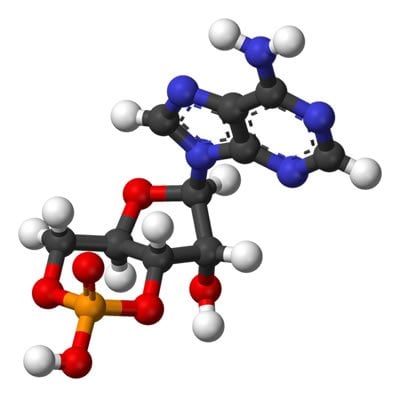Second messengers are small molecules that transmit signals in the cell. A single second messenger typically interacts with several signalling proteins. “Even though this may give the impression of promiscuity, the interactions are in fact highly specific” Assistant Professor Rehmann from the University Medical Center Utrecht explains. “It is just that one second messenger functions in multiple signalling pathways. This is not a problem, as its concentration is tightly controlled. But it probably turns into a problem if we would flood the body with a drug just mimicking this second messenger. What we need is a drug influencing only one process.”
The study, publishing January 20 in the open access journal PLOS Biology, describes the development of a cAMP analogue that specifically activates only Epac2, one of several cAMP-responsive proteins. Furthermore, the analogue activates Epac2 more potently than cAMP itself. About 100 analogues were synthesised in an interactive design process. Several crystal structures of Epac2 in complex with cAMP analogues were determined. The research helps to explain the molecular basis for the selectivity and the strong activation potential.

“We started the project 12 years ago and were driven by scientific curiosity. Our aim was to understand the regulation of the Epac2 protein but also to learn in general about the interaction between proteins and drug-like small molecules. The principal challenge was identifying and understanding small differences in the cAMP-binding domains of cAMP-regulated proteins and matching these differences with suitable modifications of the cAMP molecule. During that time other laboratories found a function of Epac2 in insulin secretion.” Rehmann says. His team also showed that their cAMP analogue augments glucose-induced secretion of insulin from human pancreatic islets.
Rehmann believes that this cAMP analogue will be a valuable tool to gain more insight in the function of Epac2: “I do not think that we fully understand the role of Epac2, but I am confident that we will soon have clarity about whether or not Epac2 is a suitable pharmacological target. Let me be clear on this we are far from a drug, it is rather basic research what we are doing.”
Funding: H.R. was supported by a veni grant from the Netherlands Organisation for Scientific Research (NWO). J.L.B. acknowledges the support of NOW (CW-Top-subsidie 700.59.302). F.W.H. acknowledges the support of the Federal Ministry of Education and Research Project (FKZ 0316177F, No Pain) and the European Union (EU) FP7 collaborative project Affinomics (Contract No. 241481). This work was partially funded by Top Institute Pharma (TI-Pharma) (J.L.B. and R.A.J.J.). This work was partially funded by the “Diabetes Cell Therapy Initiative” (DCTI) consortium (R.A.J.J. and E.J.P.K.). The funders had no role in study design, data collection and analysis, decision to publish, or preparation of the manuscript.
Competing Interests: F. Shwede is an employee and H.-G. Genieser is the CEO of BIOLOG LSI, and C.N. Langerijs and R.A.J. Janssen are employees of Galapagos, BV.
Contact: Press Office – PLOS
Source: PLOS press release
Image Source: The image is credited to Benjah-bmm27 and is in the public domain
Original Research: Full open access research for “Structure-Guided Design of Selective Epac1 and Epac2 Agonists” by Frank Schwede, Daniela Bertinetti, Carianne N. Langerijs, Michael A. Hadders, Hans Wienk, Johanne H. Ellenbroek, Eelco J. P. de Koning, Johannes L. Bos, Friedrich W. Herberg, Hans-Gottfried Genieser, Richard A. J. Janssen, and Holger Rehmann in PLOS Biology. Published online January 20 2015 doi:10.1371/journal.pbio.1002038






